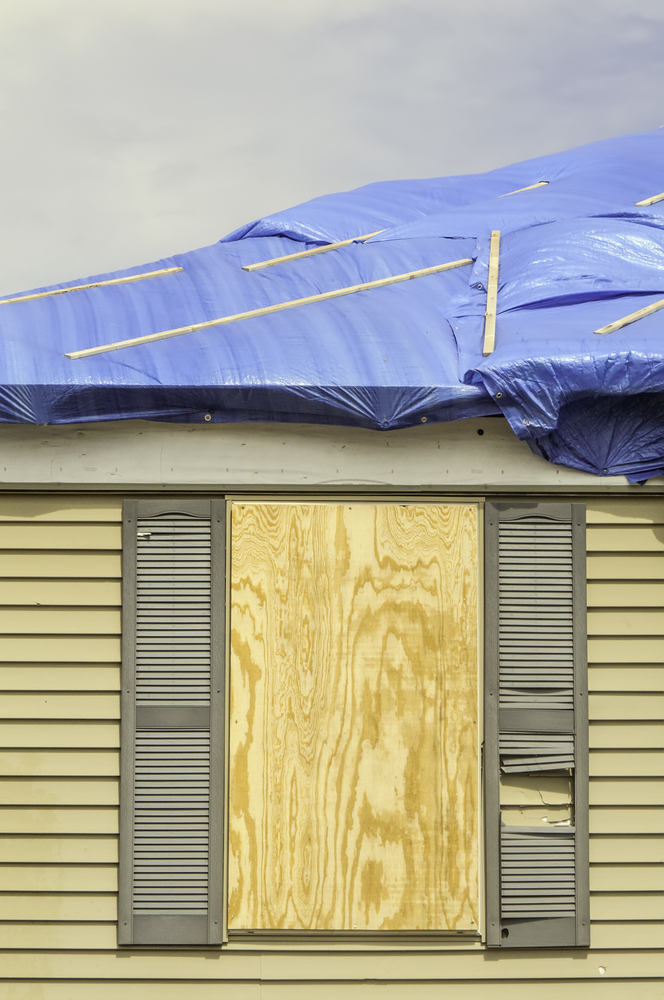Named Storm Deductibles | How do these deductibles work?

The heavy rainfall, high winds and storm surges associated with hurricanes and other intense storms can devastate any home or business property, even those located hundreds of miles off of a coast. With the potential to cause tens of billions of dollars in damage, insurance companies and carriers generally use special, “named storm deductibles,” to provide coverage in the event of a loss.
Named storm deductibles are typically higher than traditional fixed-dollar deductibles for losses related to fire, theft and even water in some cases. Named storm deductibles are only triggered under specific circumstances and can vary based on location. However, it is important to know the details of these deductibles so your family, your home and even your business are prepared in the event of a severe storm.
What’s in a Name?
Named storm deductibles are triggered by just that—a tropical depression, tropical storm or hurricane that is severe enough to be named by the National Weather Service (NWS).
The NWS first started to name storms to make it easier for the public to track and follow severe storms as they developed. However, after large hurricanes and tropical storms began to cause large amounts of damage, insurance providers began looking for ways to mitigate their losses. Named storm deductibles, tied to the time periods surrounding the National Weather Service-named storms, help insurance providers mitigate losses caused by a named storm.
It is important to note that other organizations have started to name storms. The Weather Channel, a privately owned weather organization, recently began naming winter storms in order to make tracking them easier for its viewers. However, insurance providers only apply named storm deductibles to storms named by the NWS.
The Triggers for Named Storm Deductibles
The triggers for named storm deductibles can vary based on the insurance provider and location, although almost all triggers generally include a timing window, such as 24 hours before a storm is named by the NWS to 48 hours after it is downgraded to a tropical storm. During this window, your named storm deductible will apply to any damage instead of the normal wind and hail deductible.
Other triggers can include when a hurricane makes landfall or when a hurricane watch is declared. Because the triggers for named storm deductibles can vary significantly, it’s important to look up the exact rules as defined by the state you live in and your specific insurance policy.
Price Differences
Named storm deductibles are generally higher than regular deductibles because they are based on a percentage rather than on a fixed dollar amount. Most named storm deductibles are between 1%-5% of your total insured amount, but in high-risk areas, deductibles can reach as high as 10%.
For example, imagine that the Dwelling Coverage A on your home insurance policy is insured for $500,000. If your home is damaged by normal wind or hail loss, you would pay a regular, fixed-dollar deductible—usually $500 or $1,000—before your insurance provider would provide coverage for the remaining damage. However, if the damage was caused during the window of a named storm deductible, your deductible would be calculated using a percentage. For a 5% deductible, this would amount to an out-of-pocket expense of $25,000 before your insurance provider would pay for damages.
What it Means for You
Deductibles for damage caused by named storms are higher in order to mitigate the financial risk to insurance providers while still offering premiums that are relatively low. Additionally, many insurance providers believe that the high deductibles will encourage homeowners and other property owners to take proactive steps to protect their homes from severe storms.
For more information on named storm deductibles, tips to protect your home from severe storms or a review of your current home or property insurance policy, contact us today.


.png)
